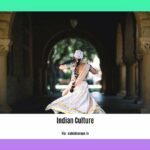Hey there, history buffs! Let’s dive into the story of the Tequesta tribe, the original Floridians. These folks lived in the Sunshine State way before Miami became a thing. Get ready to learn about their cool customs, how they thrived in their world, and the legacy they left behind that still resonates today.
Facts About the Tequesta Tribe
Imagine living in South Florida long before air conditioning, grocery stores, or even paved roads. For over 2,000 years, that’s exactly what the Tequesta tribe did! They called the sunny shores of Biscayne Bay their home, and though they’re gone now, they left behind intriguing clues about their lives – clues that we’re still piecing together.
Here’s a glimpse into the world of these resilient people:
Living on the Water, Masters of Their Domain
- Canoes as Works of Art: Forget about inflatable rafts; the Tequesta were all about those handcrafted canoes. We’re talking seriously impressive woodworking skills here. These weren’t just simple boats; their canoes were often adorned with unique designs and patterns. Their creativity extended to pottery and other crafts as well. Talk about multitalented!
- Navigating Like Experts: The Tequesta were the ultimate water people. They knew the waterways of Biscayne Bay and the Everglades like the back of their hands. Their trusty canoes weren’t just for show; they were their key to fishing, trading, and visiting their neighbors. Imagine them gliding through the mangroves, catching the sunset over the water—they were truly connected to their environment.
- Building Alliances for a More Peaceful Existence: Nobody wants to live in constant conflict, right? The Tequesta were all about keeping the peace and nurturing relationships. They formed alliances with neighboring tribes, often through marriages. This likely created stronger bonds and a more harmonious region.
Living off the Land, Respecting Nature’s Bounty
- Sustainable Living at Its Finest: Forget grocery stores; the Tequesta were all about sustainable living. They gathered wild resources, especially fish, which were abundant in the waters around them. They used different fishing methods like spearfishing and nets, likely being careful not to take more than they needed. They understood that respecting nature was vital for their survival.
Mysteries of Leadership and Everyday Life
- Who Was in Charge? Like any society, the Tequesta probably had some kind of leadership structure. There’s mention of a chief named Tequesta (how fitting!), but some stories suggest he may have sometimes answered to the powerful Calusa chief. It’s a bit of a historical puzzle, and researchers are still trying to put all the pieces together.
- Women’s Vital Role in Tequesta Society: Let’s hear it for the Tequesta women! They weren’t just on the sidelines; they were active participants in everything from woodworking and fishing to decision-making. Evidence suggests that they were respected members of the tribe, playing a vital role in their community.
Connecting the Dots: Trade, Culture, and a Lasting Legacy
- Trading and Sharing Knowledge: The Tequesta weren’t isolated. They likely interacted with other Native American tribes in the Southeast, exchanging goods, stories, and ideas. This cultural exchange probably helped shape their world and left a lasting impact on the region.
- Gone But Not Forgotten: Even though the Tequesta eventually moved away from Biscayne Bay in the 18th century (the exact reasons remain unclear), their presence is still felt today. Many place names in South Florida come from their language, and their story reminds us of the rich history and culture that existed long before our modern cities were built.
Learning about the Tequesta is like opening a window into the past. While there’s still much we don’t know, each discovery brings us closer to understanding the lives of these fascinating people who called South Florida home for so long.
What are some interesting facts about the Tequesta?
We’ve talked about how awesome the Tequesta people were at making canoes, right? But those canoes weren’t just practical; they were like works of art, often decorated with intricate designs. These skilled navigators could maneuver through Biscayne Bay and the Everglades with ease – and we’re talking about some pretty challenging waterways!
Fishing was their bread and butter; it’s how they got most of their food. But they were also incredibly resourceful. They didn’t just catch every fish in sight; instead, they appear to have developed sustainable fishing methods to ensure there were always enough fish for everyone, even in the future.
Now, here’s something historians are still trying to figure out: who was really in charge of the Tequesta? Some believe they had a main chief named, you guessed it, Tequesta! Others suggest that they might have actually answered to the chief of another powerful tribe, the Calusa. It’s a real-life history mystery!
One thing we know for sure is that the Tequesta valued alliances. They often formed strong bonds with neighboring tribes through marriages, likely strengthening relationships and creating opportunities for cultural exchange.
The Tequesta’s impact on South Florida is still felt today. Many places in the region have names rooted in the Tequesta language. How cool is that? Their story is a significant part of the area’s rich and diverse cultural heritage, reminding us of the people who lived there long ago.
It’s exciting to think that archaeologists and historians are still learning new things about the Tequesta all the time. Who knows what other mysteries they might uncover about this fascinating ancient culture!
What did the Tequesta tribe eat?
Living in what we now call South Florida, the Tequesta tribe enjoyed a diverse and delicious menu, taking advantage of both land and sea to keep their bellies full. Imagine being surrounded by lush landscapes and sparkling waters teeming with tasty treats!
As skilled fishermen, they knew how to catch a variety of fish from the ocean and nearby rivers. Snapper, grouper, mullet – you name it; they probably caught it! And it wasn’t just fish on the menu. The Tequesta were also adept hunters, adding land-based protein to their meals, such as deer, rabbits, and various birds.
But wait, there’s more! These resourceful people also knew a thing or two about foraging. Imagine them gathering wild fruits, nuts, and plants, adding variety and extra nutrients to their meals.
Here’s the really cool part: they were masters of preservation. The Tequesta developed clever ways to make their food last, ensuring they had something to eat even during leaner times. They likely used techniques like drying and smoking to keep their pantries stocked year-round.
So, while we might not have their exact recipes, we can picture the Tequesta enjoying a delicious spread of fresh, foraged, and hunted food. They were resourceful, adaptable, and knew how to make the most of their environment. Researchers are still learning about their culinary practices, but one thing is clear: the Tequesta tribe knew how to eat well!
What are 3 facts about the Calusa tribe?
Speaking of the Calusa, let’s learn a bit more about this remarkable tribe. They were a dominant force in southern Florida long before anyone else arrived, and several things make them stand out in history.
- Fearless Warriors: The Calusa were known for their warrior spirit. When the Spanish arrived hoping to conquer new lands, the Calusa put up a fierce resistance. They earned a reputation for being incredibly brave and resilient.
- Masters of the Water: Imagine being so in tune with the sea that it practically felt like home. That was the Calusa. They navigated those waters like experts, built impressive canoes, and were masters of fishing. This deep connection to the ocean allowed them to not only survive but thrive and build a powerful trading network.
- A Complex and Advanced Society: The Calusa weren’t just a loose group of people; they had a structured society with levels of leadership and a rich spiritual life. Archaeologists are still piecing together the details, but their burial practices—often involving burying treasured possessions with their dead—suggest a belief in an afterlife and indicate complex rituals and traditions.
It’s amazing to think about how the Calusa lived and thrived in a challenging environment, and there’s still so much we’re learning about them.
How Did The Tequesta Get Its Name?
The Tequesta tribe flourished in South Florida long before Europeans set foot on their land. But here’s something interesting: they didn’t actually call themselves “Tequesta.” They used the names Ais or Ays to identify themselves. So, where did the name “Tequesta” come from?
It’s believed that the name was given to them by Spanish explorers who arrived in the 16th century. The name “Tequesta” is thought to be related to the Spanish word tequeste, which translates to “naked people.”
It’s important to remember that this doesn’t necessarily mean the Tequesta were always unclothed. It’s more likely that their attire, probably simpler and more suited to the Florida heat, differed from the clothing norms familiar to the Spanish. This observation, recorded in their accounts, could have easily led to the name sticking.
The story of the Tequesta’s name reminds us that history can be complex. Sometimes, names and labels given by outsiders don’t reflect the full story or how a group saw themselves. It’s through understanding these nuances that we gain a more accurate and respectful view of the past.
Key Takeaways:
- The Tequesta referred to themselves as Ais or Ays.
- The name “Tequesta” most likely came from the Spanish.
- The Spanish word tequeste means “naked people,” which might reflect observations about differences in clothing.
How old is the Tequesta tribe?
The Tequesta tribe’s presence in South Florida wasn’t a brief moment in time; they left an enduring mark on the region. Archaeologists believe these folks were already living on Florida’s southeastern coast as far back as the 3rd century BC. However, by the 1700s, their population had sadly dwindled considerably.
So, what defined these people for all those centuries? Imagine being so connected to the ocean that it shaped your entire way of life. The Tequesta were masters of the sea, relying on fishing, hunting, and gathering for their meals. Interestingly, unlike some other tribes, there’s no evidence to suggest they ever adopted farming practices.
One of the most intriguing things they left behind is the mysterious Miami Circle. This isn’t your average pile of rocks; it’s a carefully arranged pattern that some experts believe was used for important ceremonies. It’s like a puzzle from the past, offering us a peek into their beliefs and rituals.
The biggest question remains: what exactly happened to the Tequesta? While we may never know for sure, it’s likely a combination of factors contributed to their decline, including European diseases and conflicts with other tribes.
Research into the Tequesta is ongoing, with archaeologists and historians working tirelessly to piece together a more complete picture of their lives and legacy.
Did the Tequesta Tribe Fish?
You bet they did! Living in southeastern Florida, the Tequesta tribe depended heavily on the ocean’s bounty. Imagine them skillfully navigating the waters in their canoes, not just for travel, but as a platform for fishing. They likely used spears to catch fish and probably set nets and traps to improve their chances of a successful catch.
Seafood probably made up a significant part of their diet—all kinds of fish, shellfish like clams and oysters, and maybe even crabs and lobsters. But they weren’t just fishing experts. They also gathered fruits, nuts, and plants from the land, incorporating variety and essential nutrients into their meals.
There’s a place called the Miami Circle, an archaeological site believed to be the remnants of a Tequesta village. This discovery provides a glimpse into their lives and how intertwined they were with the sea.
While we can’t be certain of every single technique they used, evidence strongly points to fishing as a crucial element of their survival. Ongoing research continues to reveal more about the Tequesta way of life and their resourcefulness in adapting to the coastal environment.
What are some interesting facts about Porterville?
While Porterville might not have ancient tribal mysteries like the Miami Circle, it’s still important to explore the unique aspects of this town. Every place has its own story to tell!
Uncover intriguing facts about the mighty Pyrenees Mountains and immerse yourself in the history behind the remarkable Sutton Hoo Helmet. Dive into these captivating reads to expand your knowledge and unravel the mysteries that lie within these historical wonders!
facts about pyrenees mountains
What did the Tequesta tribe do for fun?
Life for the Tequesta tribe wasn’t all work and no play. Just like us, they enjoyed relaxing and having a good time. But their idea of fun was deeply rooted in their environment and traditions.
Imagine sitting around a crackling fire, listening to elders share captivating stories and myths passed down through generations. These weren’t just tales to pass the time; they were history lessons, moral guidance, and entertainment all woven into one. These storytelling sessions likely brought the community together, sparking laughter and wonder in listeners of all ages.
Speaking of togetherness, what’s a gathering without a little music and dancing? The Tequesta were known for their rhythmic celebrations, where the sounds of drums and rattles filled the air. We can only imagine the energy and joy as they moved to the music, their dances possibly telling stories or honoring their beliefs.
The Tequesta were also skilled artisans. During their leisure time, they crafted beautiful pottery, expertly wove baskets and mats, and even carved intricate designs into wood and bone. These creations weren’t merely decorative; they were useful, demonstrating the Tequesta’s ability to combine artistry and practicality.
Of course, no society is complete without a bit of friendly competition! The Tequesta were probably big on games and sports. We can picture them testing their skills by hurling spears at targets or racing each other, their cheers and laughter echoing through the air.
Living in a place like Florida, the Tequesta had a natural playground at their doorstep. While fishing and hunting were essential for survival, these activities also provided excitement and adventure.
While we can’t know everything about their daily lives, it’s clear that the Tequesta found joy and relaxation in activities that celebrated their culture, skills, and connection to the natural world. Through storytelling, dancing, crafting, competing, and exploring, they created a vibrant and fulfilling existence.
A note on sources: Much of what we know about the Tequesta comes from archaeological evidence and a few historical accounts. This means there are still many unanswered questions, and our understanding of their culture is always evolving. As you learn more, remember to consider the different interpretations and perspectives that researchers offer.
How big is Tequesta Florida?
We’ve been discussing the Tequesta people, this captivating tribe that thrived in southeastern Florida for centuries. But how much ground did their territory actually cover?
The Tequesta’s homeland stretched from around present-day Miami all the way up to Boynton Beach, a considerable stretch of coastline! These expert fishers and skilled canoeists were all about that ocean life. Their lives were deeply entwined with the sea.
Instead of relying on agriculture, they were masters of their environment, gathering fruits, roots, and herbs – essentially living off the land’s generosity. This suggests that their territory needed to be abundant enough to support their lifestyle.
While we don’t have precise maps outlining their boundaries, we can glean a good understanding of their presence from archaeological sites and the stories passed down through time. Our understanding of the Tequesta, like with many indigenous cultures, is constantly evolving as researchers uncover new information. It’s an ongoing journey of discovery!
What did the Tequesta tribe grow?
The Tequesta tribe, who called the sunny shores of South Florida home for over two millennia, didn’t actually cultivate crops in the way we might typically imagine. Instead of tending to fields of corn or beans, they lived in harmony with their environment, skillfully utilizing the abundance of resources readily available to them.
Fishing was central to their lives, with the plentiful waters providing a steady supply of nourishment. They were also adept hunters and gatherers, making the most of the diverse plants and animals that thrived in the region.
It’s interesting to consider how their lifestyle differed from other Native American tribes who did rely on agriculture. While some researchers believe that the Tequesta’s choice to forgo farming was influenced by their environment, others suggest it was a deliberate cultural decision, perhaps reflecting a profound respect for the natural world.
This lack of reliance on agriculture doesn’t mean the Tequesta weren’t in tune with the plant world. They likely possessed a deep understanding of the various edible and medicinal plants native to their area. Imagine them carefully gathering berries, roots, and herbs, their knowledge passed down through generations. Unfortunately, much of this traditional knowledge has been lost, making it challenging to gain a complete picture of their relationship with the plant world.
Despite the mysteries that still surround their lifestyle, one thing is clear: the Tequesta tribe were remarkably resourceful, adapting to their environment in a way that allowed them to not only survive but thrive for centuries. Their story reminds us of the ingenuity and resilience of indigenous cultures and the importance of understanding and respecting diverse ways of life.
Key Points about the Tequesta Tribe
- Water-Oriented Culture:
- Skilled canoe crafters with artistically designed canoes
- Masters of navigating Biscayne Bay and the Everglades
- Formed alliances with neighboring tribes, often through marriages
- Sustainable Living:
- Relied on wild resources, primarily fish
- Practiced sustainable fishing methods
- Leadership and Society:
- Possibly had a chief named Tequesta
- Some evidence suggests they may have answered to the Calusa chief
- Women held positions of power and actively participated in all aspects of life
- Trade and Connections:
- Interacted with other Native American tribes for trade and cultural exchange
- Legacy:
- Left behind place names in South Florida that reflect their language
- Their history contributes to the rich cultural heritage of the region
These are just some of the fascinating aspects of the Tequesta tribe. As researchers continue to unearth new findings, our understanding of this remarkable culture continues to grow.
- Senior at What Age: Benefits & Eligibility Guide - March 29, 2025
- Unlocking Senior Benefits: How Old is a Senior? Your Complete Guide - March 29, 2025
- Master Russian Politeness:A Guide to Saying Please - March 29, 2025



![- [History Of Alexandria Bay Ny]: Unveiling the Enchanting Past of a Thousand Islands Gem History-Of-Alexandria-Bay-Ny_2](https://www.lolaapp.com/wp-content/uploads/2024/02/History-Of-Alexandria-Bay-Ny_2-150x150.jpg)












